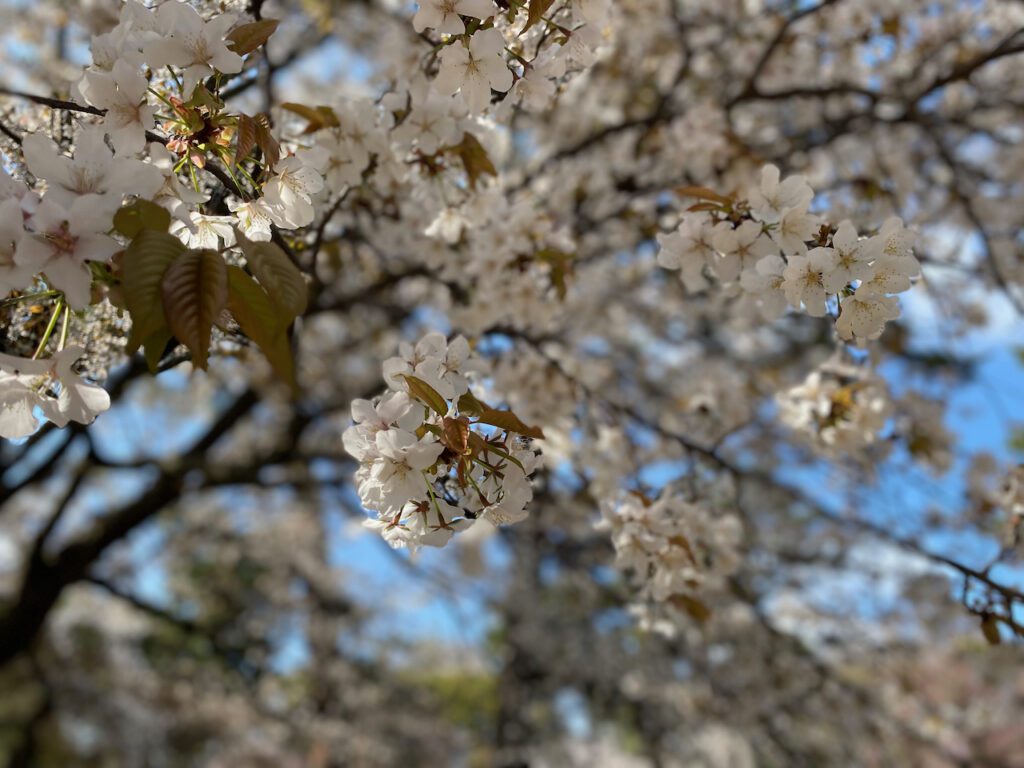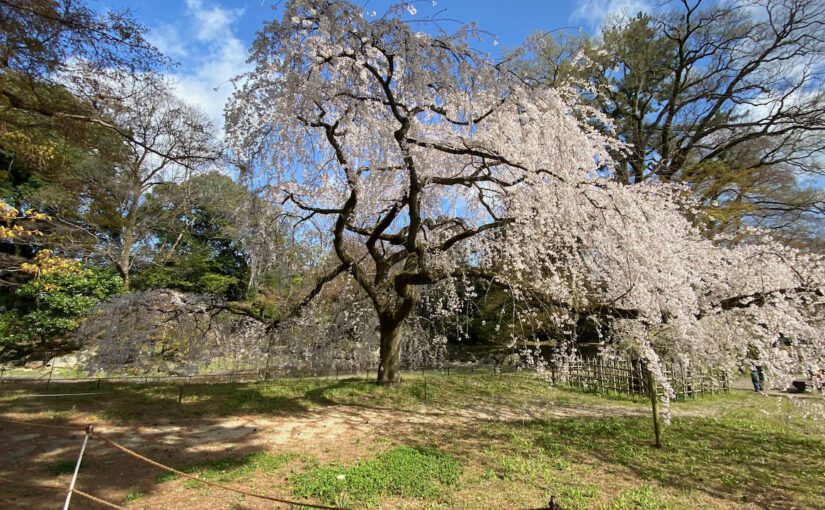And we all felt honored
In the last several years, I have visited the two sisters whenever I go back to Kyoto. Rakufulin sisters, as I call them, produce beautiful obis. Each of their works of art has a story behind its design. As I got to know them better, I became more and more intrigued in their stories.
Each time we met, our phrase of saying good-by was always “let’s go out together in kimono nest time.” After repeating it so many times, we started to wonder if we were using this phrase in vain. But this spring, we finally made it a true statement!
The weather was perfect. Not too cold, not too hot. Above all, it was not raining. And the timing was perfect! According to the cherry blossom forecast, the cherry trees in Kyoto Imperial Palace were 70 – 80% in full bloom. We can’t afford to miss this opportunity! The night before my visit, I texted Reiko-san, the older sister, that I’m coming in kimono. So will she and Aiko-san, the younger sister, was her reply.
The next morning, I put on my new obi with my mother’s Oshima Tsumugi kimono and took a bus from Osaka to Kyoto. The bus was not crowded, so I lounged in the seat comfortably for about 80 minutes.
When I arrived at their office, both Reiko-san and Aiko-san welcomed me in their kimono. Reiko-san was wearing her mother’s old obi with a cherry blossoms design, and Aiko-san was wearing one designed by her grandfather, the founder of Rakufulin. After enjoying the seasonal bento box lunch, we walked to the north side of the Kyoto Imperial Palace together.

The design of Reiko-san’s obi has different kinds of cherry blossoms. Some are the kind that bloom early in the spring. Also Somei Yoshino, which blooms in mid-spring. Then blossoms of Yaezakura, which bloom later. The design gives Reiko-san an opportunity to wear this obi throughout the spring.

My new obi is designed by Reiko-san. She got an inspiration from the original pattern, called Taishi Kanto, of an ancient fabric housed in Horyuji Temple in Nara. The fabric is believed to have been used by Shotoku Taishi (574 – 622). With her choice of colors and the rhythm of the line, Reiko-san has resurrected the 1400-year-old design pattern to suit the obi of the 21st century.

Aiko-san’s obi is one of Rakufulin’s signature designs. Her grandfather traveled all around the world and collected textiles. Inspired by exotic patterns, he created one-of-a-kind designs fitted to obi.
On the corner on which a mansion of the Konoe Family once stood, the cherry trees were in full bloom. No matter how dressed up we were, we were mere models to supplement the dominant, graceful, and impermanent beauty of nature. And we were all honored to be there together on that sunny spring afternoon.



